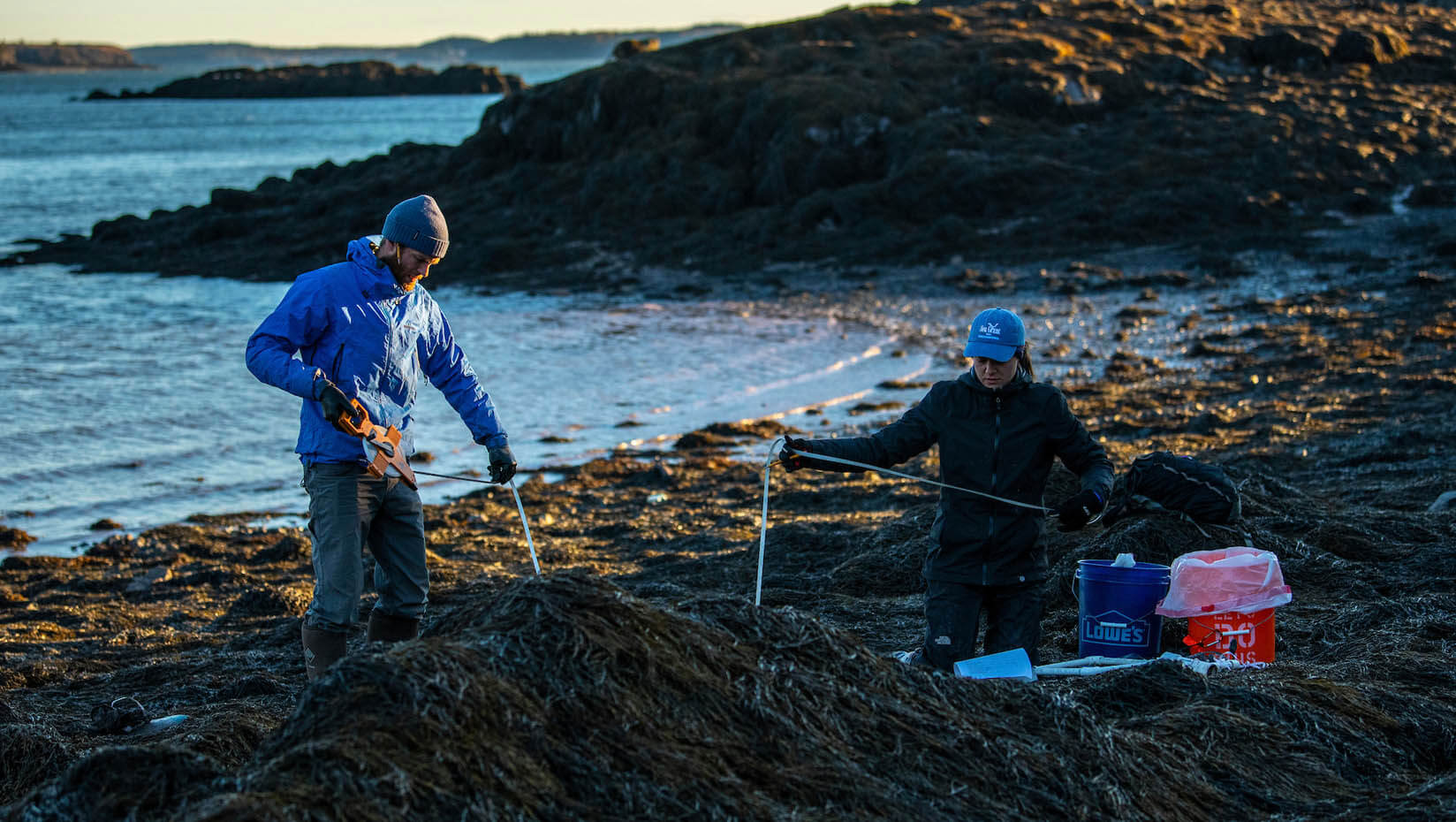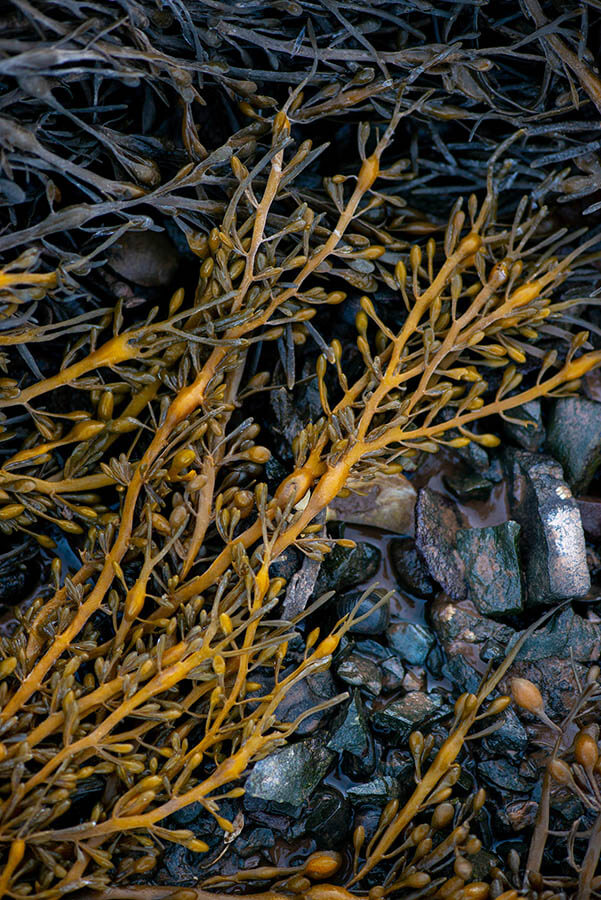
Study unravels the impact of rockweed harvest at the bed-scale
A study led by the University of Maine captured how entire rockweed beds recover from harvest, and the practice has a smaller impact than previously thought.
Rockweed wields immense influence over its intertidal habitat. Its tangled branches form the backbone of a rich ecosystem that shelters and feeds an abundance of marine life. Everywhere rockweed grows, invertebrates, fish and fowl follow.
The marine alga has also been valued as a soil amendment for centuries, and more recently as crop biostimulants. The Maine Department of Marine Resources reports that commercial harvest has more than tripled over the past 20 years. Rockweed grows back following harvest, with biomass recovering faster than height. This change, combined with climbing harvest pressure, has led to concern regarding the practice. Harvesters, landowners, ecologists and community scientists want to understand how cutting and removing rockweed affects the ecosystem it creates.
 UMaine ecologist Amanda Klemmer and her collaborators traipsed Maine’s tidal waters to examine the impact of rockweed harvest over the whole bed — a first for the species. Previous studies in the United States and Canada examined harvest impact at smaller scales or without control sites. The team chose to study harvest recovery over the whole bed, which mirrors the scale that both commercial harvesters and mobile animals, like birds and fishes, interact with rockweed.
UMaine ecologist Amanda Klemmer and her collaborators traipsed Maine’s tidal waters to examine the impact of rockweed harvest over the whole bed — a first for the species. Previous studies in the United States and Canada examined harvest impact at smaller scales or without control sites. The team chose to study harvest recovery over the whole bed, which mirrors the scale that both commercial harvesters and mobile animals, like birds and fishes, interact with rockweed.
The research team documented the biomass and height of rockweed in 100 meter long swaths before and one year following commercial harvest. The study included 38 different sites from Harpswell downeast to Cobscook. All sampling was non-destructive in an effort to isolate changes in rockweed characteristics to either natural variation or harvest, and not from sampling methods.
The study found that harvest patterns were uneven, creating a mosaic of habitats across the bed. This indicates that harvest has less impact than previous studies, with a smaller scale of focus, reported. It also supports the idea of studying natural resource and ecosystem management decisions at a variety of spatial scales.
On average in the study, rockweed biomass fully recovered one year after harvest but the height remained lower where harvest occurred. They also found that sites with more intensive harvest were less likely to fully recover biomass and height in that time.
“These results suggest to me two bottom lines, first that harvesters exploit beds patchily, like individuals walking haphazardly with weed wackers. This dilutes the effects of harvest for the overall rockweed bed. Second, recovery of algal biomass post-harvest is faster than it is for algal height. This result has been shown before, but the speed of biomass recovery here is quite remarkable,” says Chris Petersen, Emily and Mitchell Rales Chair in Ecology at the College of the Atlantic. “The harvest impacts on this foundational species appear less than I believe many would have predicted.”
Klemmer, who studies food webs on Maine’s coastline, and her team drew from the broad knowledge base of the harvest industry, conservation groups, state and federal agencies, and public interest groups to inform the study’s design. She hosted a stakeholder advisory panel in Belfast in 2018, and continued to engage with groups for the duration of the project. Altogether, they worked with more than 80 landowners and eight harvesters to gain access to and select sites for the study.
“Having everyone in that room to see what everyone’s priorities were and where we could find common ground was really meaningful. And to put a face to some names was also good from both perspectives. A lot of connections came out of those meetings, overall it was a great experience,“ says Alison Feibel, senior resource biologist at Acadian Seaplants Limited.
The research team included first author and Ph.D. candidate Elliot Johnston, as well as Hannah Mittelstaedt, Laura Braun and Hannah Webber, all graduate students at UMaine’s School of Biology and Ecology in the lab of Klemmer. Webber also works as marine ecology director at the Schoodic Institute. Brian Olsen, director for UMS TRANSFORMS, who holds a faculty appointment in the school, and Jessica Muhlin, professor of marine biology at Corning School of Ocean Studies at Maine Maritime Academy, also contributed to the study.
The study was published in the Journal of Experimental Marine Biology and Ecology. The research was funded by Maine Sea Grant and Pittman-Robertson funds awarded by the Maine Department of Inland Fisheries and Wildlife. It was also supported by the USDA National Institute of Food and Agriculture, Hatch Project Numbers ME0-21710, ME0-22207, and ME0-22322 through the Maine Agricultural and Forest Experiment Station.
Contact: Erin Miller, erin.miller@maine.edu
